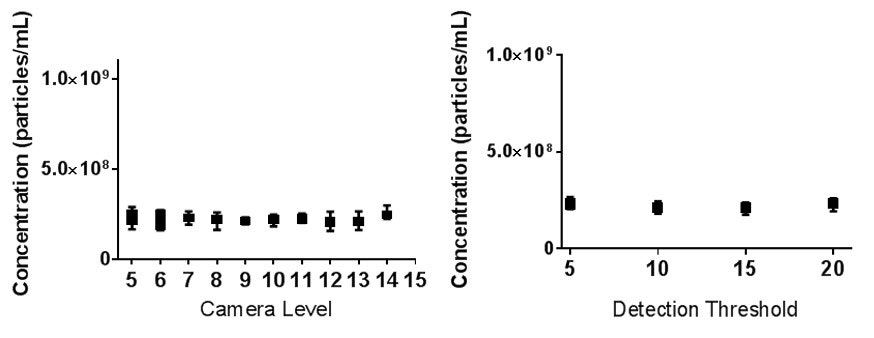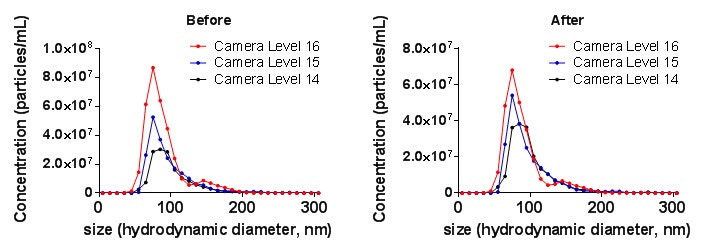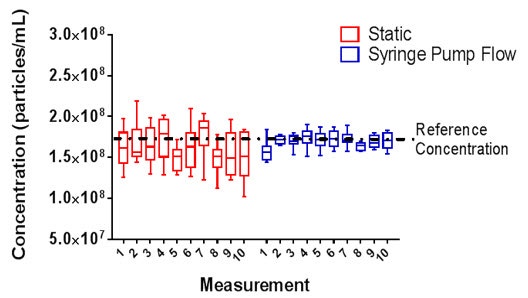Concentration Measurement upgraded NTA systems increase concentration measurement accuracy and repeatability improving measurement robustness and removing the influence of user settings. This is achieved through upgrading the Concentration Measurement of systems individually to reduce the influence of user selected capture and analysis settings and adopting a protocol to provide greater repeatability of measurements:
Parameter | Specification |
|---|---|
Instrument | NS300; NS500 (all lasers) with syringe pump |
Repeatabilitya | 3% (15% before upgrade) |
Reproducibilityb | 10% (44% before upgrade) |
Dilution Linearity error | 13% |
Concentration Range | 1x106 – 1x109 particles per mL |
Software | NTA 3.1 |
aCoefficient of variation (CV), bMAPE (Mean Absolute Percentage Error)
The NTA concentration measurement uses a dual approach to improve both repeatability and reproducibility.
The upgrade uses a dynamic value for observation volume. This reflects changes in the volume of liquid that particles are imaged in during video capture and analysis. These changes can be caused by a number of sample properties or user settings which may impact the amount of laser light scattered. This may change the depth of the field of view and therefore the volume particles are counted in and will influence measured concentration. Some examples of how sample properties or user settings can influence observation volume are found in the table below.
Parameter | Process | Effect on observation volume |
|---|---|---|
Particle refractive properties | Greater scattering power of particles | High refractive index material increase observation volume |
Particle size | Greater scattering power of particles | Larger sized particles increases observation volume |
Camera level | Sensitivity to light capture | Higher camera level increases observation volume |
Concentration | Increased number of scattering points – more scattered laser light | High concentration increases observation volume |
By incorporating this dynamic value for observation volume, concentration measurement accuracy has been shown to increase significantly whilst removing the influence of user settings (Figure 1). Through these improvements reproducibility of measurements has also increased (Figure 2).

|

|
The NTA Concentration Measurement Upgrade has also been shown to improve the accuracy and precision of non-standard samples including exosomes and microvesicles (Figure 3). In this sample type example, different users typically selected camera level 14, 15 or 16.

|
Additionally, a protocol for sample delivery and measurement has been developed which has contributed to improvements in measurement repeatability. This protocol incorporates developments in both software and hardware to provide repeatability values as low as 3 % (CV). Figure 4 identifies the improvements in repeatability seen by imaging particles under flow compared to static within the sample chamber.

|
These combined steps provide repeatability values as low as 3 % (CV). Measurements of dilution linearity can provide accurate results with an error as low as 13 % across a concentration range of 1x106 – 1x109 particles per mL (subject to particle size and refractive index).


This project has received funding from the European Union’s Seventh Programme for research, technological development and demonstration under grant agreement No 604347.